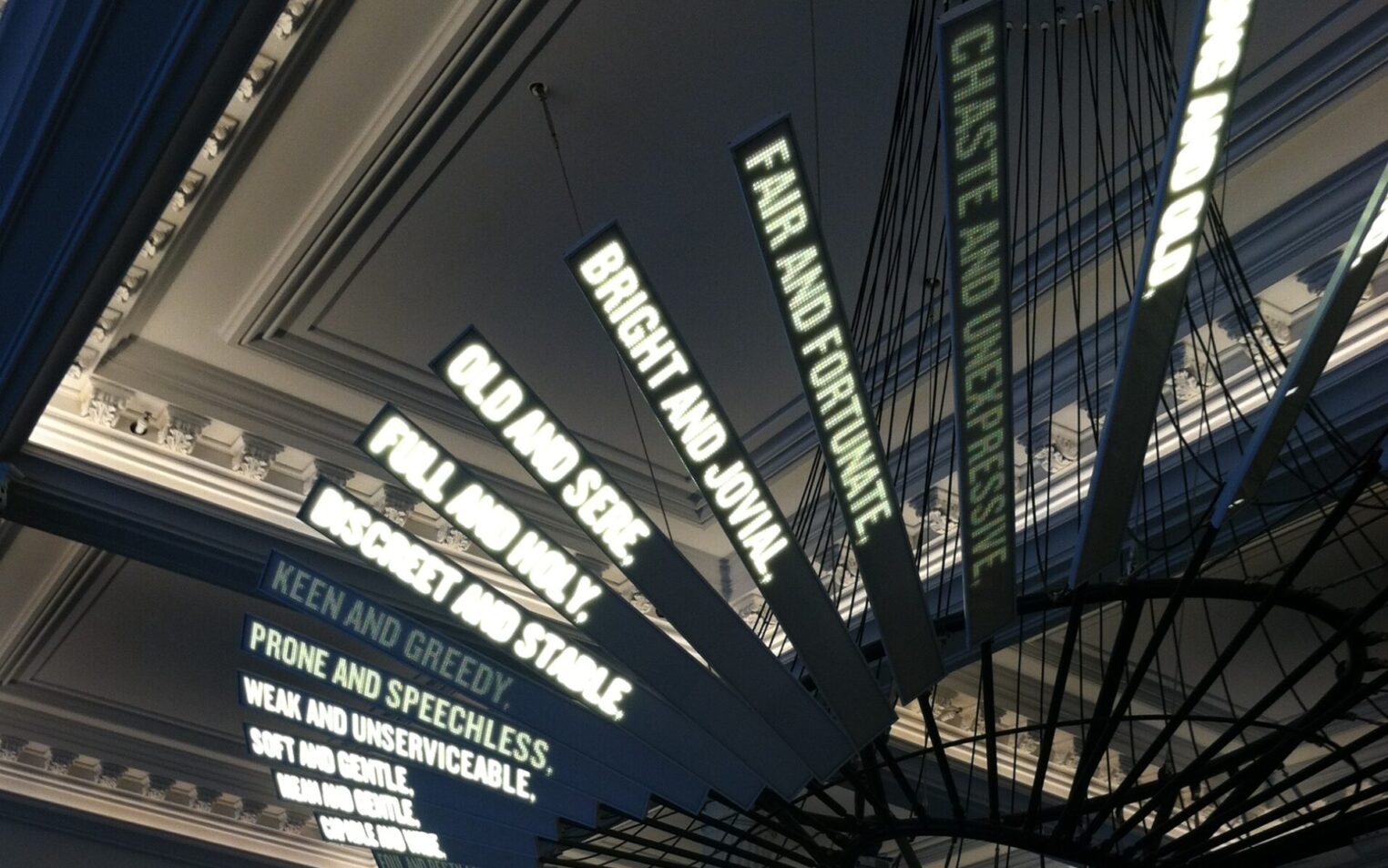Reading and Attention
Arnhold Undergraduate Research Project
- 2019 Duration: Summer 2019

Download
Project Contributors
- Rita Raley
- Ripley "Baker" Baker
- Leila Stegemoeller
- Madison Balasek
- Marcela Davila-Cham
- Helen Foley
- Hailey Gross
- Stephanie Hockman
- Emma Johnson
- Malia de Mello
- Gary Mitchell
- Jasmine Palmerin
- Brenda Tan
- Ryan Watt
The title of Rafael Lozano-Hemmer’s art work, 33 Questions per Minute/33 Preguntas por Minuto (2000), articulates a “threshold of legibility,” a rate beyond which the human mind is said to be unable to process further information. Is this, however, empirically true? If one were to adapt this work for the present, or even for different screen environments, would the number need to change? There is a fair bit of research on neuroplasticity but what specifically do we know about how quickly we are now able to process linguistic data when it flickers before our eyes? I have long said the brainwashing scene in The Parallax View (1974) seems excruciatingly, almost comically, slow, which is of course a subjective rather than objective claim, but are there studies of text-based subliminal messaging that would support it? What does recent scientific and philosophical research on the connections among body-mind-environment have to say about reading in particular? But there is a further line of inquiry. We might accept that speed reading is an adaptive skill — we have developed habits of skimming and scanning in order to try to keep up — but can we devise a framework for considering how we read in digital environments that does more than prove that we have learned to accommodate the pace and rhythms of the always-on 24/7 world?
Details
Undergraduates surveyed cognitive science and behavioral research on reading in digital environments and collectively produced an annotated bibliography noting some of the key recent studies.
They then collectively authored a short white paper on “best practices” for other students, highlighting any techniques, tools, or hacks that may be of use for English majors (e.g. ‘studies show that it is best to use X settings on e-readers’). They also each wrote a short research report on a media art project of their choosing that in some respect foregrounds the issue of reading.
Image: Photograph of the Mark Hansen-Ben Rubin visualization of Shakespeare’s theatrical corpus, by Rita Raley.